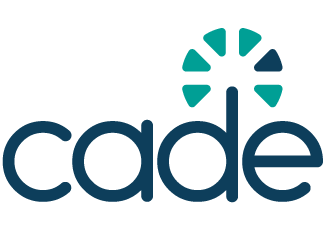Critical internet resources (CIR)
Why critical internet resources matter
The internet’s infrastructure relies on core components that ensure it functions securely and reliably. These components – often called critical internet resources (CIRs) – include internet protocol (IP) numbers, the domain name system (DNS), and the root zone.
Understanding how these resources are managed and governed is essential for civil society as it seeks to influence the policies that shape the internet’s future.
What are CIRs?
Internet protocol (IP) numbers
IP numbers are unique addresses that every device connected to the internet must have. They enable devices to communicate with each other across the globe. The IP acronym in a narrative is often followed by its version number, such as IPv4 or IPv6.
IP numbers are distributed by the Internet Assigned Numbers Authority (IANA), a division of the Internet Corporation for Assigned Names and Numbers (ICANN). IANA delegates blocks of numbers to five regional Internet registries (RIRs): AFRINIC (Africa), APNIC (Asia-Pacific), ARIN (North America), LACNIC (Latin America and the Caribbean), and RIPE NCC (Europe, Middle East, and Central Asia).
The depletion of IPv4 addresses, driven by the rapid growth of internet-enabled devices, highlights the importance of transitioning to IPv6. IPv6 provides a vastly larger pool of IP numbers, ensuring the internet remains scalable and sustainable. Yet, many regions – especially in the Global South – face challenges in adopting IPv6 due to limited resources and technical capacity.
The domain name system (DNS)
The DNS system translates user-friendly domain names (like www.example.com) into IP numbers, making the internet easier to navigate. The DNS includes root servers, top-level domains (TLDs) like .com and .uk, and numerous other servers worldwide. It supports country code TLDs (ccTLDs) like .uk and generic TLDs (gTLDs) like .org.
ICANN coordinates the DNS globally, ensuring the stability of the system. The introduction of new gTLDs and internationalised domain names (IDNs) has expanded access, enabling domain names in non-Latin scripts like Chinese (中国) or Russian (рф).
The root zone
The root zone is the core database of all top-level domains. It connects the DNS system globally and is managed by IANA and maintained by Verisign. Replicated across over 1,000 servers worldwide, it ensures robustness and resilience in the DNS.
The policy dimensions of CIRs
While technical in nature, CIRs carry profound policy implications that intersect with civil society’s interests.
Social and governance impact
CIRs influence who can access and navigate the internet. For example, the equitable allocation of IP numbers and management of domain names affects inclusion and equity in global internet access. Poorly managed policies can contribute to digital divides or limit access to key resources.
Economic and developmental impact
Efficient management of IP numbers and domain names facilitates global trade, innovation, and economic growth. However, disparities in IPv6 adoption risk marginalising developing regions. Civil society advocacy can help ensure fair distribution and opportunities for all.
Human rights and accountability
DNS policies can affect freedom of expression and privacy. For instance, surveillance-oriented DNS policies or restrictive ccTLD governance could infringe on fundamental rights.
Geopolitical implications
CIR management is deeply intertwined with global power dynamics. The IANA stewardship transition to the multistakeholder community was a step toward decentralised governance, but alternative root systems or competing models could fragment the internet.
Forums where CIRs are shaped
The governance of CIRs involves specialised organisations and multistakeholder processes.
The Internet Corporation for Assigned Names and Numbers (ICANN) oversees the global coordination of DNS and IP address allocation through IANA. ICANN ensures the stability and security of the DNS and supports the introduction of new TLDs and IDNs.
The five Regional Internet Registries (RIRs) manage IP address allocation regionally: AFRINIC (Africa), APNIC (Asia-Pacific), ARIN (North America), LACNIC (Latin America and the Caribbean), and RIPE NCC (Europe, Middle East, and Central Asia).
The Number Resource Organization (NRO) is a coordination body for RIRs that supports the development of global IP number policies and technical standards.
The twelve root server operators manage the operation and replication of root servers worldwide, ensuring the resilience and accessibility of the DNS.
There are also multilateral processes – platforms like the Internet Governance Forum (IGF) and regional governance bodies which discuss CIR-related policies, providing avenues for stakeholder input and collaboration.


